Marilyn Stafford was largely unknown until her 90s, when she had a belated and glorious brush with fame. Stafford, who has died aged 97, became celebrated in the way she should have been for decades. She was given a major retrospective at the Brighton Museum & Art Gallery, published a magnificent book of her photographs, was interviewed by newspapers on both sides of the Atlantic, and finally got to tell her stories.
And what stories. Albert Einstein, Indira Gandhi, Charles Aznavour, Édith Piaf, Henri Cartier-Bresson … this tiny, unassuming American woman reeled off names like a grocery list. Stafford’s portfolio covered all life with compassion, humour and style. She was equally at home documenting Algerian refugees who had fled France’s scorched earth policy as she was shooting fashion or celebrity portraits.
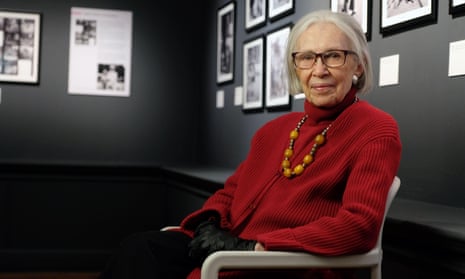
She could have been a film star or distinguished chanteuse – and almost was. Stafford grew up in Cleveland, Ohio, during the great depression. Her father was a pharmacist who had emigrated from Latvia as a young boy, her mother a beauty who dreamed of being a “lady”. Her parents hoped she would be the next Shirley Temple, and between the ages of 10 to 18 she trained at the Cleveland Play House, alongside Paul Newman and Joel Grey. When I interviewed her last year, she described herself as “probably the only Stanislavski photographer around”.
Stafford was sassy and naturally funny. With a fabulous deadpan, she told me how her mother had died “of vanity” at the age of 103. Stafford would have made a superb character in The Golden Girls.
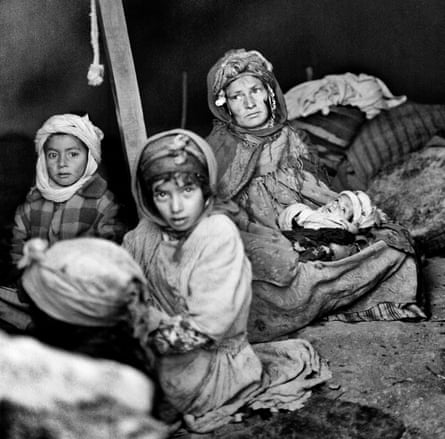
A mother and children refugees in a camp near the bombed village of Sakiet along the Algerian frontier. First published in the Observer in March 1958. Photograph: Marilyn Stafford
After graduating from Wisconsin University, she moved to New York where she played a few cameos in off-Broadway productions. But she struggled as an actor, and found her way into photography though a fluke.
In 1948, two friends were making a documentary about a physicist at his home in Princeton, New Jersey. They invited Stafford to go along with them, and asked if she would take his photograph. The man was Albert Einstein.
It was her first commissioned portrait and she had never used a 35mm camera before. She was terrified, but you wouldn’t have known from the results. In one picture, Einstein looks wonderfully crumpled and curious (he had just asked how many feet per second went through the documentary camera). In the other, he is smiling. “I’d like to think he was smiling at me,” Stafford said.
She was fond of the word serendipity. The Einstein photo was serendipitous. So was the next stage of her life, in Europe. When a friend discovered her husband was having an affair, she told him that she was going to take a trip to Europe with Stafford, and he would be paying for it. In Paris, now aged 23, Stafford got a job singing as part of the ensemble at the exclusive dinner club Chez Carrère. She made friends with Eddie Constantine, who also sang there and was dating Edith Piaf.
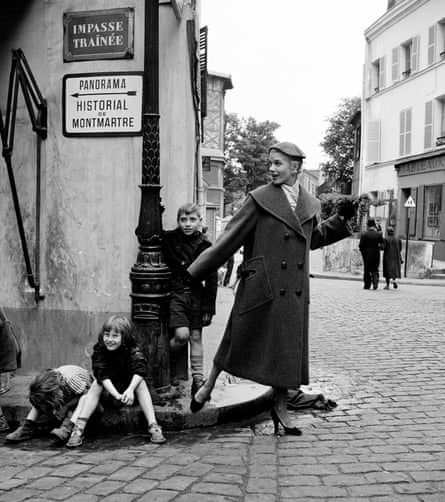
Before long she was pals with Piaf, who invited her to stay at her home. Stafford briefly moved in with Piaf, Constantine and the numerous waifs, strays and celebrities that the singer provided a refuge for.
Next door to her in another attic bedroom was the singer Charles Aznavour. Of course, they became friends too. And, of course, she took photographs of Piaf and Aznavour. Stafford’s photos are endlessly surprising. Perhaps never more so than with Piaf, renowned for her sepulchral style and tragic air. Stafford’s portraits of the Little Sparrow are all light and laughter.
She also befriended the founders of the Magnum Photos collective, Henri Cartier-Bresson, Robert Capa and David “Shim” Seymour. Cartier-Bresson taught her the quiet art of catching moments (he would sit with his camera on his knee, and when he saw a photo opportunity he would barely lift his camera to shoot), while Capa encouraged her to become a war photographer and suggested she take a job as Shim’s assistant. Stafford claimed she was a coward, that she hated carrying heavy equipment and turned down the offer. Both Capa and Seymour were subsequently killed in action.
Stafford turned away from singing to focus on photography. She would take the bus from the Left Bank to the end of the line where she photographed people in the slums of Boulogne-Billancourt. She could tell a story in a single frame and find the remarkable in the everyday, whether it was a small girl carrying a seemingly huge bottle of milk or a homeless woman asleep in a child’s buggy.
In 1956, she married the British newspaper foreign correspondent Robin Stafford (her second husband) and travelled with with him for his work. In Tunisia, six months pregnant with her daughter Lina, she took a series of devastating photographs of Algerians in refugee camps. In one picture, a mother holds her baby tenderly but her eyes are a thousand miles away. It bears a striking resemblance to Dorothea Lange’s dustbowl images. She sent the photos to her friend Cartier-Bresson, who in turn sent them on to the Observer, which used two of the photographs on its front page. It resulted in the Observer sending a reporter to cover the story of the refugees.
Perhaps my favourite Stafford photographs are of the Italian labourer and activist Francesca Serio, who became the first person to sue the Sicilian mafia after they killed her son. Serio’s face shines out of the blackest of backgrounds, both beatific and accusatory.
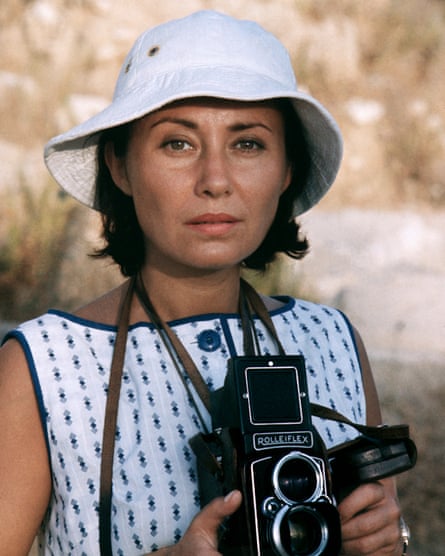
As a fashion photographer, necessity became the mother of invention. Stafford couldn’t cope with the technical hoo-ha of a studio shoot so she took models into the natural light of the real world. Her images are both impossibly glamorous and laugh-out-loud funny. In one, a gorgeous woman stands outside the Louvre wearing a long white coat, with a brolly in one hand, stilettos in the other, and her feet splayed at quarter to four. Only Stafford could have turned a Marilyn Monroe lookalike into Charlie Chaplin.
After she and Robin divorced in 1965, she moved to England with Lina and scrimped a living as a freelance photographer. Her celebrity portraits of 60s icons such as Twiggy, Sharon Tate and Lee Marvin are lovely – beautifully framed, intimate and yet somehow remote. Rather than defining their subjects, they leave you asking questions about them. She used her more commercial work to subsidise humanitarian projects such as trips to India, where she spent a month following prime minister Indira Gandhi, or a trip to Bangladesh to document rape victims. This was the work that meant most to her.
She said: “Although I very much enjoyed shooting celebrity portraits and fashion, I did it largely to be able to support my family and to self-fund my reportage work.”
The annual Marilyn Stafford FotoReportage Award was launched in her honour six years ago by the not-for-profit social enterprise FotoDocument. It is open to professional female documentary photographers working on projects intended to make the world a better place.
Despite her outstanding work, Stafford never became a “name” during her career. She said that many editors (invariably male) pigeon-holed women as portrait photographers whereas she prided herself on being a jobbing photographer capable of turning her eye to anything. After running a fashion photography agency, she retired, still only in her mid-50s.
For many years she put photography to the back of her mind and her negatives in shoeboxes under her bed. There was a happy third marriage to João Manuel Viera (a tango enthusiast and antifascist activist in Portugal during António de Oliveira Salazar’s dictatorship, who predeceased her), a move to Sussex, involvement in poetry trails and a literary festival, and Mandarin lessons. Stafford never found herself wanting for hobbies.
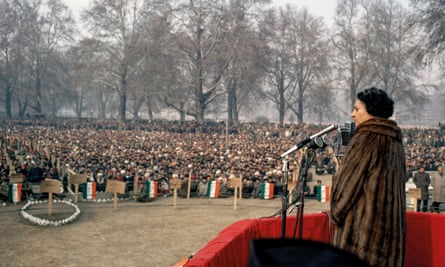
In her early 90s, local photographers and picture historians began to take an interest in her work. There was an exhibition of her photos at the Lucy Bell gallery close to her home in West Sussex, followed by exhibitions in Toronto and London, and finally the full retrospective. When Vanessa Thorpe reviewed the London exhibition for the Observer, she said Stafford’s “photographs depict a century of change, from shifting dress shapes to the impact of world conflicts”.
Last May, I interviewed her in front of an audience at the retrospective in Brighton. Stafford was glamorous, cool and smart. Her memory was encyclopaedic and her intellect razor-sharp. She danced into the gallery with her walking stick à la Fred Astaire, told stories with such passion she could have been telling them for the first time, cursed the state of the world, and at times giggled like a teenager. She segued from the hilarious to the harrowing and back again.
After hearing her talk, the audience appreciated her photography even more. Now they understood that this inspirational body of work came from a huge, generous heart that never quite lost hope.








